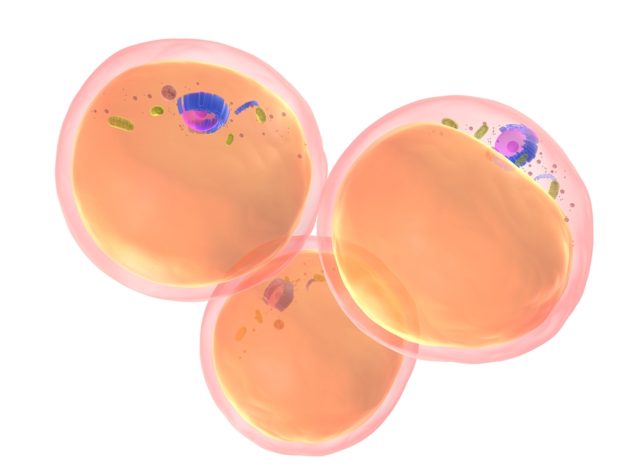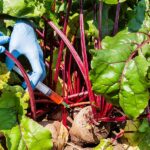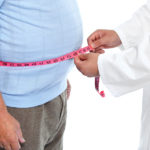By David Blyweiss, M.D., Advanced Natural Wellness
August 17, 2016
- Are your fat cells toxic?
- This could be why you aren’t losing weight
- Here’s how to get rid of toxic fat
Obesity and diabetes are huge problems days. A lot of folks are calling this the “diabesity epidemic”. I see enough of this combination in my practice to agree with the moniker. These two problems generally go hand-in-hand.
If you have one of these issues – or if you have both – you probably work hard to get regular exercise and eat healthy foods. And it can be very disheartening if you aren’t getting the results you’re looking for.
So you’ll be glad to learn that today I may be able to provide just the help you need to break through any barriers you’re facing.
When it comes to weight loss, the idea behind eating a healthy diet and exercising is to reduce the amount of fat in your fat cells. However, there may be something inside those cells besides fat. And it could be what’s hampering your efforts.
You see, today’s world is loaded with toxins. They’re in your water, air, food, perfume, deodorant and all sorts of other items.
Well, these pollutants tend to bind to your fat cells. So they’re mostly found in fatty tissue. And they just keep building up inside your body, year after year.
The problem is, these toxins – often referred to as “obesogens” – are also creating a cascade of events that lead directly to diabetes and obesity.
Open your arteries, improve blood flow for a new health miracle...
Did you know your circulatory system has over 60,000 miles of arteries, veins and other blood vessels, if stretched end to end?
But as you age, your blood vessels undergo changes, which may cause them to stiffen, thicken and get clogged.
GOOD NEWS! Doctors have now identified a “Miracle Molecule” inside your arteries that helps OPEN your arteries and IMPROVE blood flow.
It’s what Dr. Valentin Fuster calls it, "One of the most important discoveries in the history of cardiovascular medicine."To you, that means...
- Healthy blood pressure
- Sharper mind and memory
- Skyrocketing energy and muscular strength
- Increased pleasure and passion in the bedroom
- Improved circulation to every cell and organ in your body
Go here to discover a new natural way to significantly boost the levels of this miracle molecule in YOUR body NOW!
This Could be why You’re Not Losing Weight
Obesogenic compounds make your fat cells grow bigger, damage both your mitochondria and the beta cells (insulin producers) in your pancreas. This creates the perfect storm for insulin resistance, diabetes and obesity.
Many of these pollutants are also considered endocrine-disruptors. This is problematic because your fat tissue acts as an endocrine organ. It releases hormones that regulate your appetite, satiety and ability to burn calories.
Additionally, endocrine-disruptors are known to slow down thyroid function – which can drastically reduce your metabolism.
So, let’s say your fat cells are loaded with these unhealthy toxins. Guess what happens when you diet and exercise to trigger fat loss?
Not only do your cells release fat. They also release these obesity-causing toxins back into your bloodstream.
This can suppress thyroid function even further… causing your resting metabolic rate to drop even further, too. This means you’ll burn fewer calories when you’re at rest. And your body’s fat-burning ability will fly right out the window.
It’s no wonder so many people hit roadblocks in their weight loss journeys! However, there is a way to overcome this seemingly unbeatable problem.
Are You Suffering From...
- Love handles and a pot belly
- Romance that isn't what it used to
- Forgetfulness and inattention
- Low (or no) strength and endurance
- A sex drive that's shifted into neutral...or worse
If so...you may have Mature Male Burnout. Click here to discover more about this unique condition and what you can do about it.
Flush Toxins from Your Fat Cells
Obesogenic compounds are all over the place. They’re hiding in your personal care products, plastic bottles and wraps, cans and Teflon coated skillets.
However, the foods you eat are actually one of the biggest sources of these toxins. So that’s what we’re going to focus on today.
Conventional fruits and vegetables are loaded with toxic herbicides, pesticides and environmental pollutants that bind to your fat cells. That’s why I always use the Environmental Working Group’s “Dirty Dozen” list to check out which ones are laced with the most chemicals. All items on this list should always be bought organic.
Farm-raised fish can contain all sorts of chemicals. The most common are polychlorinated biphenyls, which have a direct link to obesity and diabetes. Farm-raised salmon is, by far, the worst. Avoid it at all costs. Stick with smaller species of wild-caught fish like Pacific halibut, mackerel, Alaskan salmon, sardines, herring, rainbow trout and flounder.
Commercial livestock for meat purposes is exposed to a wide variety of toxins from their food supply. As in humans, these toxic compounds tend to collect in the fatty areas of the animal. Always select lean cuts of meat and poultry from grass-fed/pasture-raised animals.
The faster you can get these foods out of your diet and replace them with healthier options, the faster you’ll be able to start shrinking your fat cells.
There are also a few nutrients that can help that can help clear toxins from your fat cells more quickly.
At the top of the list is chlorophyll. This is the green pigment in green leafy vegetables. It has the ability to bind with a variety of toxic substances… and remove them from your body with your bowel movements.
You can eat more organic leafy greens. But I also recommend investing in a chlorophyll supplement. They come in pill, liquid or powder form. Choose whichever works best for you.
The main compound in green tea, EGCG, is also a powerful weapon when it comes to relieving your toxic load. It helps reduce your body’s burden of polychlorinated biphenyls and other pollutants.
If you don’t like green tea, you can always take it in supplement form. Look for one that contains EGCG and standardized to 60% polyphenols. For the most impact, set a goal of 240 to 320 mg. of polyphenols every day.
It’s also a good idea to boost levels of your “master antioxidant”, glutathione. People who show high levels of pollutants in their bodies often have depleted stores of this antioxidant.
Your body doesn’t manufacturer glutathione on its own. And glutathione supplements are not very well absorbed by your body. However there’s another nutrient called N-acetylcysteine (NAC) that’s a glutathione precursor. 500 mg. daily can boost your glutathione stores.
SOURCES:
Lim S, et al. Persistent organic pollutants, mitochondrial dysfunction, and metabolic syndrome. Ann N Y Acad Sci. 2010 Jul;1201:166-76.
Turyk ME, et al. Relationships of Thyroid Hormones with Polychlorinated Biphenyls, Dioxins, Furans, and DDE in Adults. Environ Health Perspect. 2007 Aug;115(8):1197–1203.
Holtcamp W. Obesogens: An Environmental Link to Obesity. Environ Health Perspect. 2012 Feb;120(2):a62–a68.
Schecter A, et al. Perfluorinated Compounds, Polychlorinated Biphenyls, and Organochlorine Pesticide Contamination in Composite Food Samples from Dallas, Texas, USA. Environ Health Perspect. 2010 Jun;118(6):796–802.
Morita K, et al. Chlorophyll derived from Chlorella inhibits dioxin absorption from the gastrointestinal tract and accelerates dioxin excretion in rats. Environ Health Perspect. 2001 Mar;109(3):289-94.
Koo SI, et al. Green Tea as Inhibitor of the Intestinal Absorption of Lipids: Potential Mechanism for its Lipid-Lowering Effect. J Nutr Biochem. 2007 Mar; 18(3): 179–183.
Lee DH, et al. Hormesis and public health: can glutathione depletion and mitochondrial dysfunction due to very low-dose chronic exposure to persistent organic pollutants be mitigated? J Epidemiol Community Health. 2015 Mar;69(3):294-300.







